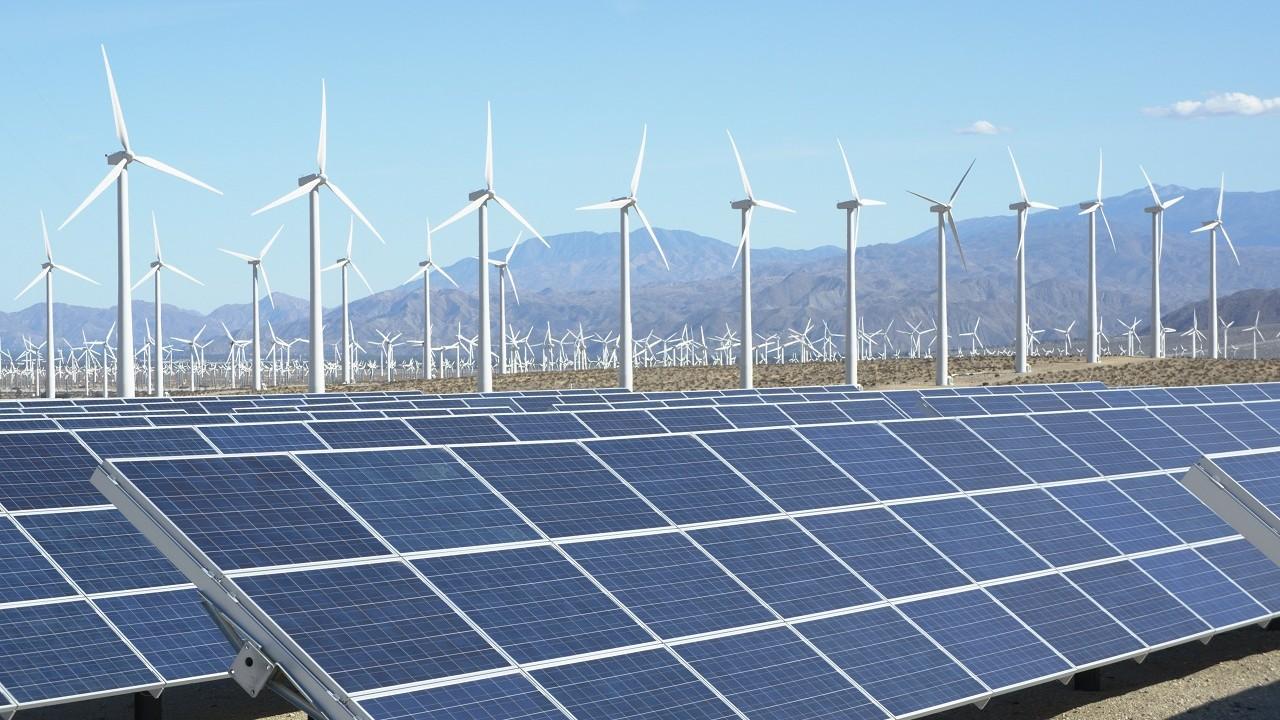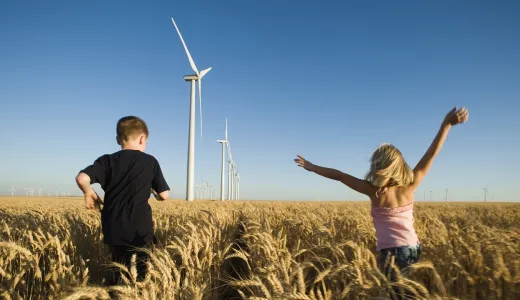How is the UK’s electricity grid being transformed?
The way electricity is used in the UK is constantly and rapidly changing – spikes in energy use are no longer confined to when we all simultaneously turn our kettles on in the ad breaks of TV shows. Combined with work towards clean energy goals, things never stand still for our electricity grid. So, how are we making sure our system is future proof?

Britain’s energy supply has been constantly put to the test over the last several decades, when there’s been a big cliffhanger at the end of our favourite TV programme or a big football game and we’ve all switched our kettles on at the same time. To cope with these surges in demand, our control room engineers have always been there to make sure the network runs without interruptions.
The highest recorded surge in electricity demand to date followed England’s loss to Germany in the 1990 World Cup semi-finals. Known as a ‘TV pickup’ moment, this measured 2,800MW – enough to power more than a million kettles.
And it’s not just TV moments that can cause a surge in demand. In 2020 the grid recorded surges of around 800MW as people headed back indoors following the weekly nationwide ‘clap for carers’ to show their support for NHS staff during the COVID-19 pandemic.
2,800MW: enough to power more than a million kettles and the highest recorded demand surge in demand, following England’s semi-final loss to Germany in the 1990 World Cup.
These surges are just some examples of the challenges our electricity grid faces every day. But, with the changes to how we use electricity, is the today’s grid the network we need to power our lives tomorrow?
To understand what we, as the company that builds and maintains the UK’s electricity grid infrastructure, are planning and why it matters to us all, let’s take a quick look back in time…
How has our energy supply changed?
Coal provided the vast majority of Britain’s energy needs up until around the 1960s. Hundreds of coal mines fed large, greenhouse gas producing power stations that pumped electricity into the grid that still supplies our homes today.
In the six decades since then, Britain’s energy mix has undergone a significant transformation. 2023 was recorded as the UK’s cleanest year for energy generation, with 51% of electricity coming from zero-carbon sources. This included 36% from wind, hydro and solar power and less than 1% from coal. In the same year, the amount of UK electricity generated from fossil fuels dropped by 22% year on year and, on 21 December, 21.8GW of electricity came from wind farms – the highest ever on record.

Why is demand for clean energy rising?
The move from fossil fuels to renewables is a vital part of the UK’s mission to meet net zero targets. In 2021, the government committed to fully decarbonising the grid by 2035, but gas-powered power stations still account for a sixth of all UK carbon dioxide (CO2) emissions.
As well as this, electricity is now integral to more parts of our lives. Our 2023 poll revealed that the average UK home has 13 electrical devices, at least 10 of which are used on a daily basis. With the transition from gas boilers to electric heat pumps and the uptake of electric cars, national consumption is projected to double by 2050.
With a power system that evolved in a totally different era there is, however, only so much that can be done with the current infrastructure. As renewable sources of energy - such as offshore wind and solar power - replace the UK’s reliance on fossil fuels significant new infrastructure is needed to connect that renewable energy from where it’s generated to where it’s needed by UK homes and businesses.
How are we making sure the grid can match the UK's needs?
To meet the rising demand for clean energy and make sure electricity goes to the right places at the right times and at the right price, we need to adapt the electricity grid.
The Great Grid Upgrade is the largest overhaul of the UK’s electricity grid in generations, made up of 17 major infrastructure projects in various parts of the country. New or improved power lines, substations, underground and underwater cables and other infrastructure will increase the grid’s capacity to transmit clean electricity more efficiently across the country, as well as connecting the grid to new wind and solar farms. High voltage offshore ‘electrical superhighways’ will also connect parts of Scotland to northern England.
> More about The Great Grid Upgrade
Complementing The Great Grid Upgrade, giant undersea interconnector cables that link the UK and its neighbours across the Channel and North Sea are making it easier to trade electricity to get the best supply and price. We already have interconnectors linking us to France, Belgium, Norway, Denmark and the Netherlands, and each year they power millions of homes. By 2030, 90% of the energy imported by our interconnectors will be from zero carbon energy sources.
The new £1.7bn Viking Link interconnector, joining Lincolnshire and southern Jutland in Denmark, can transport enough electricity to power 2.5m UK homes and will bring more than £500m in savings for UK consumers in its first 10 years.
Building all this new electricity transmission infrastructure is also predicted to create around 130,000 new jobs – from engineers and surveyors to construction specialists and apprentices, as well as job creation in related sectors like solar and wind power, as well as the electric vehicle and heat pump markets.
As households and businesses adopt new technologies, we’ll be better placed as a nation to achieve net zero by 2050 and limit the dangerous effects of greenhouse gases on the Earth’s climate. Using cheaper, cleaner domestic sources of energy to replace expensive imported fossil fuels will also help prevent energy prices hikes resulting from external geopolitical shocks.

